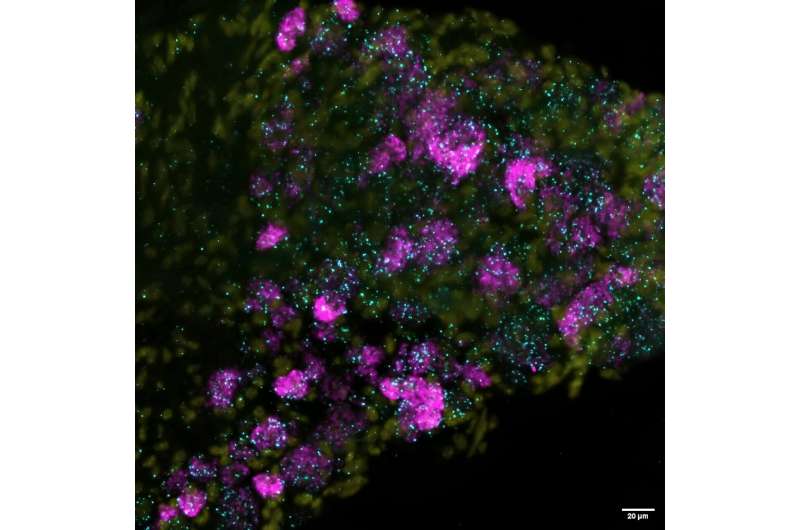This article has been reviewed according to Science X's editorial process and policies. Editors have highlighted the following attributes while ensuring the content's credibility:
fact-checked
peer-reviewed publication
trusted source
written by researcher(s)
proofread
A 'gentle touch' molecule confers light tactile sensation in humans—and perhaps in individual cells

You were probably taught that we have five senses: sight, sound, smell, taste and touch. This is not quite right: "touch" is not a single sense, but rather several working together.
Our bodies contain a network of sensory nerve cells with endings sitting in the skin that detect an array of different physical signals from our environment. The pleasant sensation of a gentle touch feels distinct from the light pressure of our clothes or the hardness of a pencil gripped between our fingers, and all of these are quite different from the pain of a stubbed toe.
How do these sensory neurons communicate such a wide range of different inputs?
In "new research published in Science," the two co-authors of this article and our colleagues have found a force-sensing molecule in nerve cells called ELKIN1, which is specifically involved in detecting gentle touch. This molecule converts gentle touch into an electrical signal, the first step in the process of gentle touch perception.
How we sense gentle touch
Sensing gentle touch begins with tiny deformations of the skin due to a light brush. While they may not seem like much, these deformations generate enough force to activate sensory molecules that are found in specialized nerve endings in the skin.
These molecular force sensors form a pore in the surface of the cell that is closed until a force is applied. When the cell is indented, the pore opens and an electrical current flows.
This electrical current can generate a signal that moves along the sensory nerve to the spinal cord and up to the brain.
Our new research, led by Gary Lewin and Sampurna Chakrabarti from the Max Delbruck Center in Berlin, showed the force sensor ELKIN1 is necessary for us to detect very gentle touch.
They found mice lacking the ELKIN1 molecule did not appear to sense a cotton bud being gently drawn across their paw. The mice retained their ability to sense other environmental information, including other types of touch.
Different molecules for different kinds of touch
This new finding reveals one reason we can sense multiple types of "touch": we have multiple, specialized force-sensing proteins that can help us distinguish different environmental signals.
ELKIN1 is the second touch-receptor molecule discovered in sensory neurons. The first (PIEZO2) was found in 2010 by Ardem Patapoutian, who was later awarded the Nobel Prize for the work. PIEZO2 is involved in sensing gentle touch, as well as a sense known as "proprioception." Proprioception is the sense of where our limbs are in space that helps us regulate our movements.
Identifying these force-sensing molecules is a challenge in itself. We need to be able to study nerve cells in isolation and measure electrical currents that flow into the cell while simultaneously applying controlled forces to the cells themselves.
Do cells feel?
While much of our research studied mouse neurons, not all scientific data obtained from mice can be directly translated to humans.
With team members at the University of Wollongong, one of us (Mirella Dottori) tried to determine whether ELKIN1 worked the same way in humans. They reprogrammed human stem cells to produce specialized nerve cells that respond to "touch" stimuli. In these human cells, ELKIN1 had similar functional properties of detecting touch.
While this research expands our understanding of how we make sense of the world around us, it also raises an additional, intriguing possibility.
ELKIN1 was first identified by one of us (Kate Poole) and her team at UNSW, with Gary Lewin and his team, while studying how melanoma cells break away from model tumors and "feel" their way through their surroundings. This could mean these tiny molecular force sensors give not only us, but our individual cells, a nuanced sense of touch.
Future research will continue to search for more molecular force sensors and endeavor to understand how they help our cells, and us, navigate our physical environment.
More information: Sampurna Chakrabarti et al, Touch sensation requires the mechanically gated ion channel ELKIN1, Science (2024). DOI: 10.1126/science.adl0495
This article is republished from The Conversation under a Creative Commons license. Read the original article.![]()



















